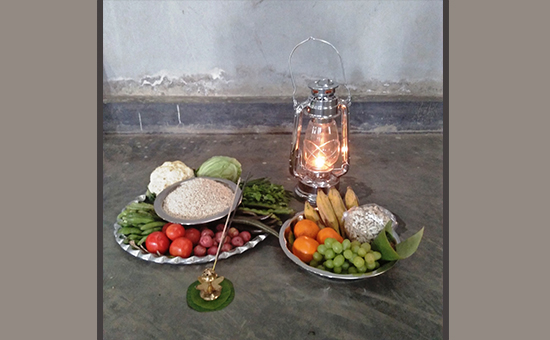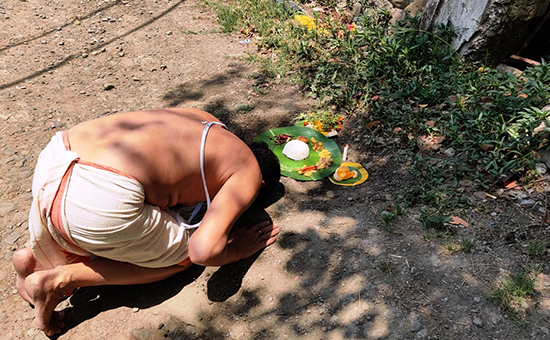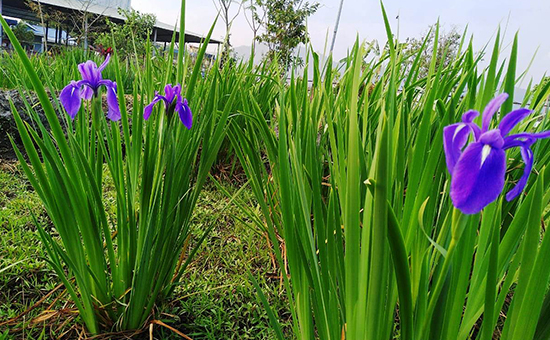- Article
explains in detail how the Manipuri New Year is celebrated. Enjoy.
There are numerous days celebrated as New Year Day in different
regions of India. Observance depends on whether the lunar or the solar calendar
is followed. Generally, this day falls on the 14th or 15th of April.
Those
following the Lunar calendar consider the month of Chaitra (corresponding to March-April) as the first month of the year, so the new year is celebrated on the first day of this month. Similarly, few regions in India consider the period between consecutive Sankarantis as one month and few others take the period between consecutive Purnimas (full moon day) as a month.
In Manipur Sajibu Nongma Panba, also called Meetei Cheiraoba or Sajibu Cheiraoba, is the lunar New Year festival of the people who follow the religion of Sanamahism. The new year celebration started during the reign of King Kiyamba (1467-1508).
The name Sajibu Nongma Panba is derived from three
Manipuri words Sajibu (the first month of
the year which usually falls during the month of April according to Meitei
lunar calendar), Nongma (first date of a month),
Panba (to be). Literally, it means the first
day of the month of Sajibu. Similarly, according to the Hindu lunar calendar,
the lunar New Year is celebrated on the same day as in Tamil Nadu, Kerala,
Odisha etc.
Traditional activities performed prior to the festival
Spring cleaning activities will be seen in all the families of the Meitei community prior to the festival. They will clean all belongings, including clothes, utensils, household items, unused items around the house, etc. Part of the tradition is to buy new clothes to be worn on the new year.
In earlier times black mud was collected from the river and pond and painted on house walls. (Earlier walls of homes were built of mud, straw, bamboo whilst the finishing was done by applying black mud hence this tradition. The painting was done annually. Today wall made of brick except in villages where traditional homes may be found).
The Meitei, Manipuri people celebrate the festival with great fanfare; gatherings of the extended family and a sumptuous feast for lunch is arranged.
The day, begins with rituals offering of different kinds of fruits, vegetables, rice and other uncooked food items and flowers of the new season to the deity Lainingthou (the King of the supeme Lord) Sanamahi. This is done early morning by
the elderly women of the house. This ritual was known as Athenpot kaba and is performed inside the house. The supreme Gods and Goddess of the Meiteis namely Leimaren, Leiningthou Pakhangba, Nongsaba, Yumjao Lairembi clothes are changed on this day.
 Offerings of fruits and vegetables.
Offerings of fruits and vegetables.
Earlier, during the time of Maharajas the King had to take bath in six different ponds on this auspicious day inside Kangla, the
ancient Palace of Manipuri Kingdom. One of the ministers in the Kings
court would predict/pronounce the weather forecast for the year ie would there be
sufficient rain, drought/flood or calamity etc. Special religious ceremonies
were also held at the Shri Shri Govindajee Temple on the New Year Day where Vishnu Puja was conducted with traditional
norms.
One Day before the New Year
Eating of
Snails/clams (one of the most precious seafood/river food) at dinner one day
before cheiraoba festival is also a common practice among the Meitei
communities.
After
eating, counting of empty shells is a common practice to know if the numbers of
shells consumed was an odd or even number. If the number was even it was considered
one would have good luck in the years to come.
The preparation of the feast
After getting blessings from Lainingthou Sanamahi, an even number of dishes are prepared for the offerings. Traditionally men of
the house make the food while the ladies help in chopping and washing
the vegetables and other ingredients.
Offering ritual
After the
dishes for the feast are made, they are ritually offered at two different traditional
locations around the house: one in the front gate of the house and the other at
the rear gate. These locations are specially cleaned and sanctified before the
offering by cleaning an area (around 2x2 feet) and decorating it with mud,
flowers and leaves.
 Offering of dishes.
Offering of dishes.
Traditionally,
the eldest son of the house will make the offering to three deities - Kumsana Kumliklai (Lord of the golden
year), Lamsenba Tusenba (Guardian of
the Land) and Lammaba Tumaba (Lord of
the land) at this sanctified area. Besides offering to the Lords, family
members also remember the departed near and dear ones.
The
offering traditionally includes an odd number (chang taaba) of dishes surrounding a small mound of steamed rice, a
token currency, fruits, flowers, a candle, and an incense stick, all of them
placed on a banana leaf. This prayer ritual is for happiness and to protect the
family members from the fatality in the coming year. This ritual is performed
in the late morning normally before noon.
Feast
After
this ritual, the dishes prepared for the feast are exchanged with
relatives/neighbours. This tradition is called Mathel Laanaba after which the feast starts.
It is
believed that on the day of new year anything that happens on that day will
happen for the rest of the year i.e. if you are happy and healthy on that day,
you will be happy and healthy for the rest of the year.
Blessing
Before having the lunch prepared for the new year feast, all would take blessings from the elders of the house/relatives and nearby elders too. Photographs and portraits of the departed family members are kept in the appropriate place of the home with symbolic white cloths offering candle, fruits and flowers. The younger offer prayers to the departed family members.
Nowadays the items of food included fish (even meat in some places) but in the earlier days only the vegetarians items were offered.
Ching Kaba (Climbing of Hills)
After the feast, it is a tradition that family members (mostly young one) climb nearby hillocks to pay homage to the deities, signifying the elevation of the spirit to reach the divine. The "Chin-nga" at Singjamei and "Cheirao Ching" at Chingmeirong, Heibokching at Langthaban, Langoll and Iroishemba at Uripok are hillocks that are usually climbed. The Ching Kāba is usually done during the afternoon to early evening, before the sun sets.
As per tradition a married woman should present a gift, usually a cloth, to her father and brothers and other members of her parental home prior to the day of the festival or on the day of the festival.
Thabal Chongba (Moonlight Dancing)
On the
night of the Cheiraouba festival celebration young boys and girls celebrate
with the Moonlight dancing/Thabal Chongba to the sounds of a Band Party. Earlier the event was performed in traditional style, using the traditional music instruments like Pena and Langden Pung and in traditional dress but times have changed.
Seasonal Flowers offered on the day
Seasonal flowers bloom only in March and April namely Leiri, Nongdonlei, Khongumelei and Kushum Lei. Over and above Kombeirei grow and bloom in wet or marshy areas. These flowers are offered to the God on this particular day.
 Komberei. Pic courtesy Makhomani Mongsaba.
Komberei. Pic courtesy Makhomani Mongsaba.
Komberei is light blue to deep blue or purple in colour. It has enjoyed a close association with the Meiteis for hundreds of years and symbolises life, love and death.
Manipur has unique traditions and culture going back thousands of years starting with Cheiraoba as Manipuri new year. In April Manipuris remember the great sons who bravely fought the mighty Britishers during the Anglo Manipuri War of 1891 at Khongjom, Thoubal district. In May is celebrated Idul Fiter and Buddha Jayanti.
In June Snan Yatra. In July Kang Chingba (Ratha Yatra/Jatra) and Idul Zuha. In August Patriots Day, Shree Krishna Janmastami, Independence Day and Jhullon. In September Tarpon Katpa, Heikru Hidongba (boat race) after offering Amlla to God and Vishwakarma Puja. In October is celebrated Durga Puja, Mera Chouren Houba, Mera Hou Chongba and Gandhi Jayanti. November starts with Kut festival of Kuki Chin Mizo, Diwali Nigol
Chakkouba one of the biggest festival of Manipur and Hari Uthan. In December is Christmas. In January, the Christian near year starts with Imoinu Iratpa (the worshiping of Godess of Wealth), Gaan-Ngai festival of the Kabui tribes, Statehood Day and Republic Day. In February is Lui-Nagi-Ni followed by Yaosang (Holi festival) in March.
Manipur
is blessed with natural beauty. Numerous festivals of communities only make
Manipur more colourful and attractive for tourists.
Author writes, edited local dailies for two decades
and was awarded the State Journalist Award by government of Manipur. He also
runs the very popular fusion music group Rhythms of Manipur . Except where stated photos by author.
Also
read
1. April
14 is celebrated as New Year across India
2. Ringing in the Tamil New Year Puthandu
3. Sangai
Festival Manipur
4. Indigenous
Games of Manipur
5. Holi
in Manipur